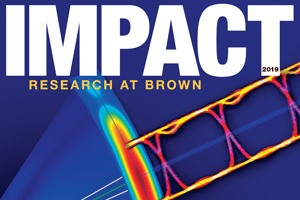There was no tightly packed pile of cannonballs at Brown’s Institute for Computational and Experimental Research in Mathematics (ICERM) during its semester-long program on “Point Configurations” in 2018. But the famous mathematical question behind such an arrangement was fully present.
Over the course of the spring, more than 300 people in mathematics, physics, and computer science from around the world shared ideas at one of the country’s eight mathematical institutes funded by the National Science Foundation. The goals? Stimulating further fundamental research and advancing knowledge.
Looming in the background during deliberations was one of the most enduring problems in mathematics—Kepler’s Conjecture, informed by the esteemed 17th-century mathematician and astronomer Johannes Kepler’s question: What is the densest way to stack equal-sized cannon- balls? The solution to the problem about efficient sphere packing in three-dimensional space may be easy to visualize—an arrangement of fruit at a supermarket is a commonly cited representation—but the theory has proven to be one of mathematics’ most difficult to solve rigorously and precisely over the centuries.
The ICERM program included sphere packing along with a variety of related topics. “Point configurations have a lot of real-world applications,” said ICERM director and Brown mathematics professor Brendan Hassett. Among the areas related to its study are optimization work such as coding and information theory, modeling the Earth’s atmosphere, dense packing of platelets in biology, digital communications, and studying crystallization through which a solid forms.
“ICERM’s goal is to develop basic research that can be disseminated widely,” Hassett said. Launched in 2010, the research institute is like a think tank with a cast that deliberately keeps rotating. It brings together some of the world’s best mathematical minds to explore topics in pure and applied math, computer science, and related disciplines.
